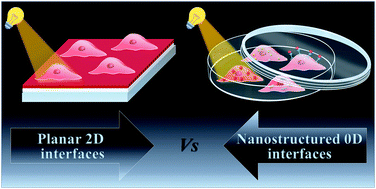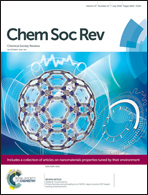The evolution of artificial light actuators in living systems: from planar to nanostructured interfaces
Abstract
Artificially enhancing light sensitivity in living cells allows control of neuronal paths or vital functions avoiding the wiring associated with the use of stimulation electrodes. Many possible strategies can be adopted for reaching this goal, including the direct photoexcitation of biological matter, the genetic modification of cells or the use of opto-bio interfaces. In this review we describe different light actuators based on both inorganic and organic semiconductors, from planar abiotic/biotic interfaces to nanoparticles, that allow transduction of a light signal into a signal which in turn affects the biological activity of the hosting system. In particular, we will focus on the application of thiophene-based materials which, thanks to their unique chemical–physical properties, geometrical adaptability, great biocompatibility and stability, have allowed the development of a new generation of fully organic light actuators for in vivo applications.

- This article is part of the themed collection: Nanomaterial properties tuned by their environment


 Please wait while we load your content...
Please wait while we load your content...